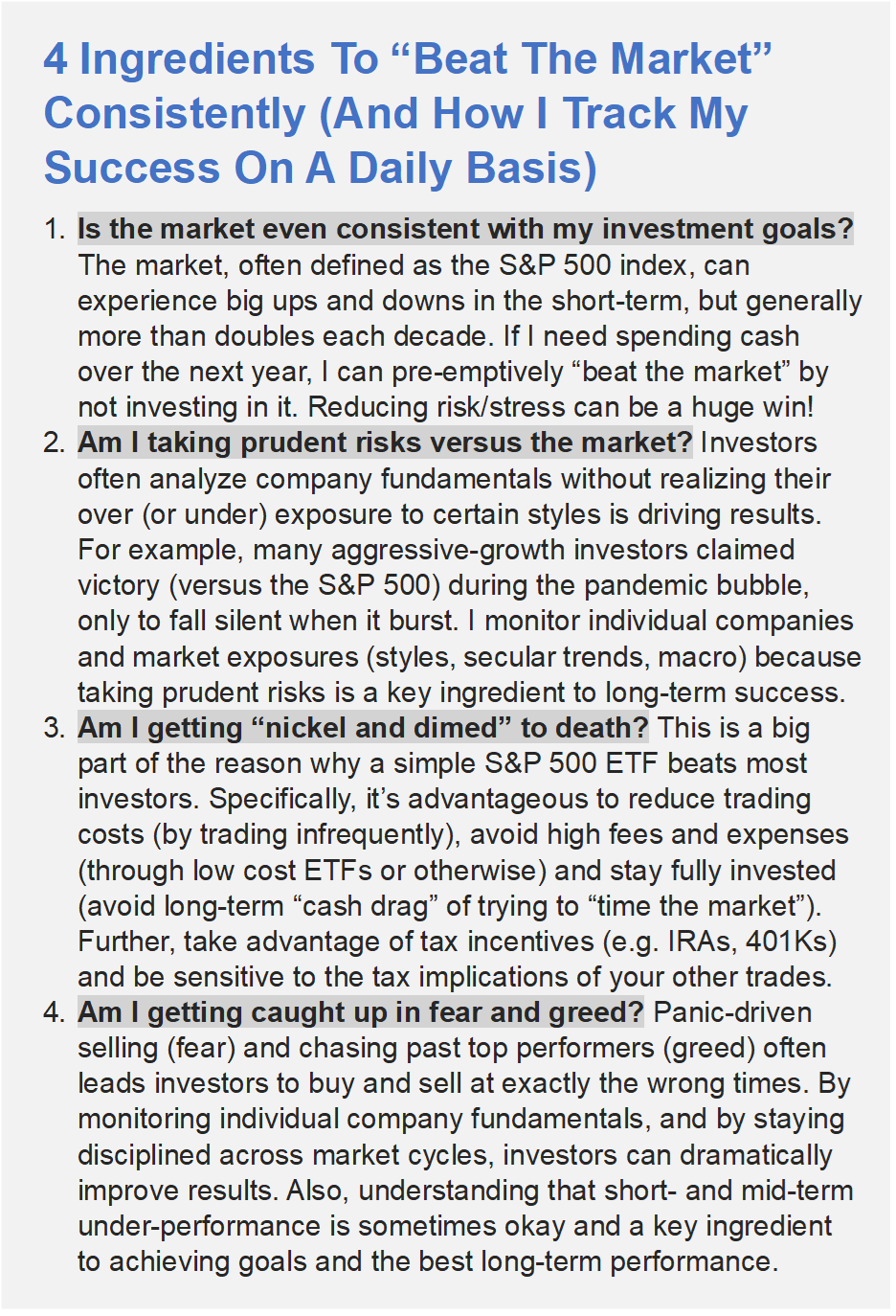1. Is the market even consistent with my investment goals?
The market, often defined as the S&P 500 index, can experience big ups and downs in the short-term, but generally more than doubles each decade. If I need spending cash over the next year, I can pre-emptively “beat the market” by not investing in it. Reducing risk/stress can be a huge win!
2. Am I taking prudent risks versus the market?
Investors often analyze company fundamentals without realizing their over (or under) exposure to certain styles is driving results. For example, many aggressive-growth investors claimed victory (versus the S&P 500) during the pandemic bubble, only to fall silent when it burst. I monitor individual companies and market exposures (styles, secular trends, macro) because taking prudent risks is a key ingredient to long-term success.
3. Am I getting “nickel and dimed” to death?
This is a big part of the reason why a simple S&P 500 ETF beats most investors. Specifically, it’s advantageous to reduce trading costs (by trading infrequently), avoid high fees and expenses (through low cost ETFs or otherwise) and stay fully invested (avoid long-term “cash drag” of trying to “time the market”). Further, take advantage of tax incentives (e.g. IRAs, 401Ks) and be sensitive to the tax implications of your other trades.
4. Am I getting caught up in fear and greed?
Panic-driven selling (fear) and chasing past top performers (greed) often leads investors to buy and sell at exactly the wrong times. By monitoring individual company fundamentals, and by staying disciplined across market cycles, investors can dramatically improve results. Also, understanding that short- and mid-term under-performance is sometimes okay and a key ingredient to achieving goals and the best long-term performance.

